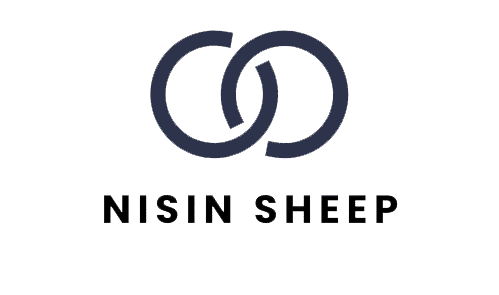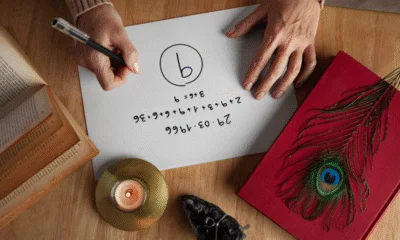In the quiet theatre of human gesture, the hand plays the lead role. Its movements can command armies, express love, or betray anxiety. And on this stage, each finger has a part to play. The thumb, stout and independent, signifies power and approval. The index finger, the pointer, directs and accuses. The pinky, small and often adorned, can hint at elegance or secret promises. And then there is the middle finger, the phallic, defiant rebel of the group.
But what of the fourth? The one nestled between the provocateur and the petite? This is the annulaire—the ring finger. In English, the name is purely functional, denoting its purpose. But in French, the term annulaire whispers of a deeper history, rooted in the Latin anulus, meaning “ring.” It is a digit whose entire identity is intrinsically tied to a band of metal, a circle of commitment, a symbol of eternity. Yet, to dismiss it as merely a pedestal for jewellery is to ignore a rich tapestry of anatomy, ancient belief, and profound cultural symbolism that makes the annulaire one of the most fascinating and quietly powerful parts of the human body.
The Anatomical Anomaly
Scientifically, the ring finger is an oddity. Extend your hand and try, one by one, to straighten your ring finger while keeping the others, particularly the pinky and middle finger, curled into your palm. You will likely find it difficult, if not impossible. This is due to the unique tendon structure of the hand. The tendons of the ring finger (and to a slightly lesser extent, the middle finger) are connected to those of its neighbours by a common muscle sheath. They are not fully independent agents; their movement is linked.
This anatomical quirk is a vestige of our evolutionary past. This connected design provides greater strength and stability for gripping, essential for our ancestors climbing and manipulating tools. For the ancient Romans, this physical connection held a different significance. They believed that a particular vein, the vena amoris—the “vein of love”—ran directly from the fourth finger of the left hand straight to the heart, the seat of love and emotion. While human anatomy has since proven that all fingers have venous connections to the heart, the poetic power of this belief was immense. It established a direct, physical link between a symbolic object (a ring) placed on that finger and the human heart, cementing the annulaire’s role as the finger of love and commitment.
This tradition, adopted and popularised by the Romans, spread across Europe. The choice of the left hand is also significant. As most people are right-handed, the left hand was considered less utilitarian, more passive and receptive—and thus, more appropriate for bearing a sacred, symbolic object that should be protected from the wear and tear of daily labour. This confluence of flawed anatomy and beautiful mythology destined the annulaire for its primary role.
A Canvas for Cultural Meaning
While the Western tradition of the wedding ring on the left annulaire is widely known, a global tour reveals that the symbolism of this finger is not universal but is instead a canvas upon which different cultures paint their own meanings.
In many Eastern Orthodox Christian countries, such as Russia, Greece, and Ukraine, the wedding ring is worn on the right annulaire. The right hand holds profound significance in these cultures; it is the hand used for making the sign of the cross, for oaths, and for blessings. To place the covenant of marriage on the right hand is to align it with truth, power, and divine sanction. Here, the annulaire is not a vessel for a vein to the heart, but a recipient of sacred honour.
In Jewish tradition, during the wedding ceremony itself, the ring is placed on the index finger of the right hand of the bride, as it is considered the most prominent and visible finger. After the ceremony, it is typically moved to the left annulaire, aligning with common Western practice, but the initial act赋予s the index finger a temporary but crucial role in the ritual.
In India, the symbolism is often linked to Ayurvedic principles and astrology. The fingers are associated with different planets and elements. While bangles and rings adorn many fingers for various reasons, the annulaire is specifically connected to the sun, symbolising creativity, authority, and the health of the body. Adorning it with certain metals, like gold, is believed to harness the sun’s positive energy.
These variations demonstrate that the annulaire’s role is not pre-ordained by nature but constructed by culture. It is a blank slate that acquires meaning through story, religion, and social agreement. Its power is not in its anatomy alone, but in the stories we tell about it.
The Silent Communicator
Beyond the wedding band, the annulaire serves as a subtle yet potent tool for non-verbal communication. A plain band on a man’s annulaire instantly signals “married,” changing the dynamics of social and professional interaction before a single word is spoken. For women, the style of the ring—a simple band versus an engagement diamond flanked by a wedding band—can narrate a chapter of her life story.
The absence of a ring can speak just as loudly as its presence. In social settings, a bare annulaire can signal availability, a conscious choice to remain single, or the end of a previous commitment. It can be a statement of independence or a blank space awaiting a new story.
Furthermore, the act of touching or fidgeting with a ring on one’s annulaire is a common self-soothing gesture, a tiny, private ritual performed in moments of stress, contemplation, or nostalgia. The finger becomes an anchor, connecting the individual to a memory, a person, or a promise, providing comfort through a simple, tangible circle of metal.
In the realm of power dressing and professional aesthetics, the annulaire is also a prime location for statement rings—signet rings, family crests, or bold artistic pieces. Unlike a ring on the index finger, which can seem aggressive, or on the pinky, which can seem flashy, a substantial ring on the annulaire carries a weight of maturity and established identity. It suggests a connection to something significant without needing to loudly declare it.
The Modern Annulaire: Evolving Meanings
In the 21st century, the symbolism of the annulaire is undergoing a fascinating evolution. As societal norms around marriage, partnership, and identity shift and expand, so too does the meaning of the ring finger.
The traditional diamond engagement ring, once marketed almost exclusively to women, is now being adopted by some men, who wear their own promise rings on their annulaire. Same-sex marriages have fully embraced the symbolism of the wedding band,赋予ing the annulaire a powerful new role in the fight for love and recognition. The finger’s symbolism is becoming more inclusive, representing a wider spectrum of committed relationships beyond the heterosexual norm.
We are also seeing a rise in the concept of the “non-engagement” ring. People are purchasing significant rings for themselves to mark personal achievements: graduating, buying a home, overcoming an illness, or simply as an act of self-love and affirmation. These rings, placed proudly on the annulaire, reclaim the finger’s narrative. It is no longer a space solely dedicated to a promise from another person, but a testament to one’s own journey and resilience. The vena amoris is being reinterpreted; the love it connects to can be love for oneself.
This evolution highlights the most profound aspect of the annulaire: its ultimate meaning is personal. For some, it remains a sacred symbol of a shared vow. For others, it is a fashionable accessory or a marker of personal milestone. It can be all these things at once. The finger itself does not change; it is our human stories that change around it, investing a simple digit with ever-shifting layers of significance.
Conclusion: The Keeper of Circles
The annulaire is a paradox. It is the least independent of our fingers, yet it is the one we choose to symbolize the ultimate independence surrendered in a mutual commitment. It is a biological structure of tendons and bone that we have imbued with the most abstract of human concepts: love, fidelity, and eternity.
It is the keeper of circles. The circular band it wears has no beginning and no end, representing timelessness. The finger itself, through its anatomical connection to its neighbours, speaks of our inherent connectedness to others. And the stories we tell about it—from the mythical vena amoris to the modern act of self-commitment—form a circle of cultural meaning that continues to turn and evolve.
So, the next time you glance at your hand, pause at the fourth finger. See it not just as a place for a ring, but as a silent historian, a cultural chameleon, and a deeply personal storyteller. The annulaire is a testament to our innate need to find meaning in our physical form, to anchor our most profound promises in the very flesh and bone of our being. It is, and always has been, so much more than just a finger.

